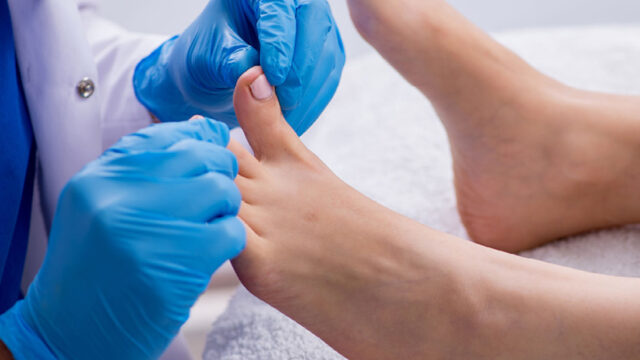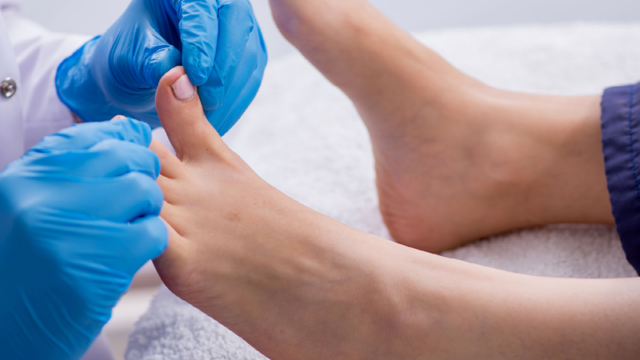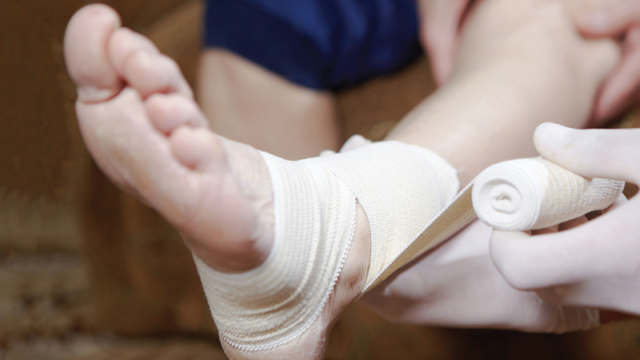Diabetic Wounds and Foot Ulcers
How Does Diabetes Lead to a Diabetic Wound?
Diabetes is a condition that disrupts the body’s ability to process food into energy, leading to increased blood sugar levels. This excess sugar can damage blood vessels, resulting in poor circulation. Without proper blood flow, oxygen-rich blood struggles to reach wounds, impairing the healing process.
As a result, people with diabetes are at a higher risk of developing chronic, non-healing wounds, often referred to as diabetic wounds. This is why specialized wound care is crucial for those managing diabetes, as it helps prevent complications and promotes optimal healing.
Risk Factors for Diabetes
- Excessive weight
- Genetics
Signs and Symptoms of Diabetes
- High blood sugar
- Thirst
- Frequent urination
- Sugar in the urine
- Persistent fatigue
- Wounds that are slow to heal
- Numb or tingling in hands and feet
- Very dry skin
- Blurry vision
Potential Treatment for Diabetes
- Weight control
- Exercise
- Watch blood sugar levels
- Insulin or other medications
Diagnosis for Diabetes
- Physical exam
- Review of signs and symptoms
- Lab results
About Diabetic Wounds
A diabetic foot ulcer is a wound that occurs on the feet, heels or toes of people living with diabetes. People with diabetic foot ulcers often can’t feel pain in their feet due to diabetes-related nerve damage. This lack of sensation can be dangerous, as injuries may go unnoticed. However, even when there’s no pain, the foot typically still has a pulse and the skin around the wound may feel warm to the touch.
If left untreated, the ulcer can grow larger and deeper due to diabetes-related blood vessel damage. This can lead to infection, hospitalization, and, in severe cases, amputation. That’s why early intervention and expert care are crucial.
Preventing and Managing Diabetic Wounds
At Healogics, we understand that for individuals with diabetes, wound development is a significant concern, particularly diabetic foot ulcers. We recognize these wounds pose special risks due to the complications of diabetes, such as reduced sensation and poor circulation. Our experience has shown that early detection and proper care are crucial to prevent serious complications like infections or amputations. That’s why we’re committed to providing you with expert guidance and care.
Key Steps for Wound Prevention and Care
- Maintain good blood sugar control
- Inspect your feet daily, including between toes, and use a mirror for hard-to-see areas
- Ask a family member or friend to help check your feet if needed
- Never cut corns or calluses yourself
- Avoid over-the-counter corn or callous removers, foot pads, or arch supports
- Wash feet daily and dry thoroughly, especially between the toes
- Moisturize dry feet, but avoid getting lotion between toes
- Trim toenails straight across only
- Always wear shoes, even indoors
- Choose shoes that protect your feet and do not cause pressure or rubbing
- Seek immediate medical attention if you notice redness, drainage, swelling, warmth, or develop a fever over 101 F
With over 600 Wound Care Centers® nationwide, our team of specialists is ready to provide expert care when you need it most. Remember, you don’t need a referral to seek our help – we’re just a click or call away. If you notice any changes in your feet or have concerns about a potential or developing wound, don’t wait. Early intervention is key to preventing complications and promoting optimal healing.



